I had plans to write more about the Lewis family. However, a text message from the son of the mister’s cousin changed my direction and topic for the weekly post. I will get to the rest of the Lewis story soon but in the meantime, enjoy this high-flying tale!
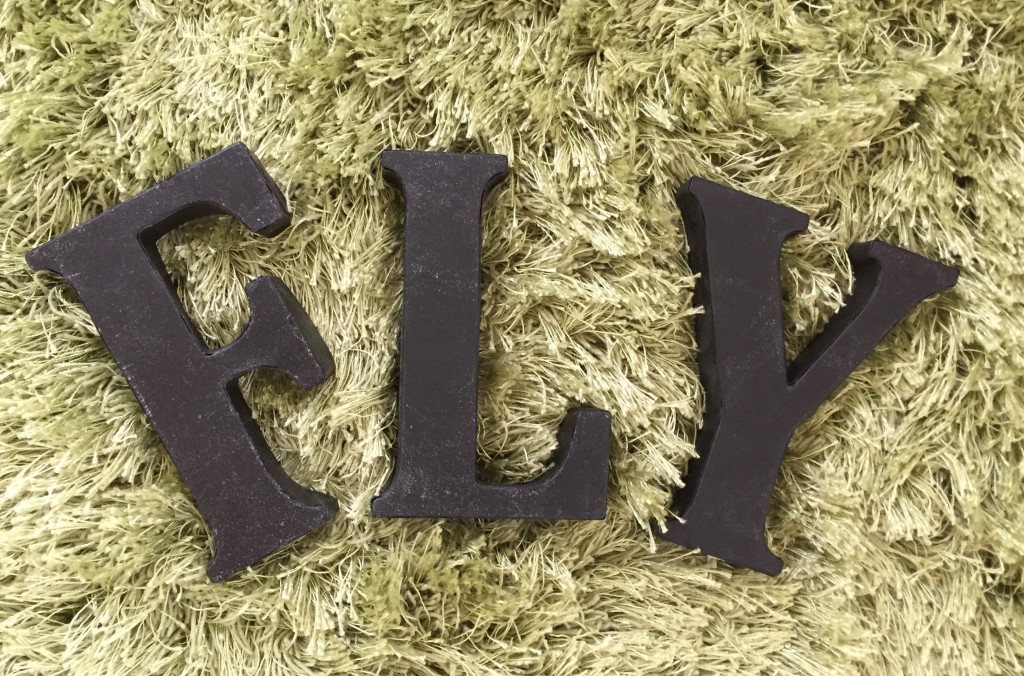
The mister is a radio-controlled airplane enthusiast. But this isn’t something he just happened upon and decided it would be a good a hobby to take up. It is a bit of a family affair. The mister’s grandfather worked as an upholsterer for the Arthur Fulmer company for many years. Salvatore built many a model “just for fun”. He was a hobbyist but also a craftsman and it wasn’t beyond him to see a photo and desire to make an item in a scale 3-D model. For a bit of a primer on his boat making, please read My Ship Has Come In. But he didn’t just build boats, he also built planes….that flew. This is the tale of one such plane.
Salvatore Sr. was a small man, not much over 62″ and quite slight. He even purchased his suits from the boy’s department! Because of his build and the fact that hobby planes at this time were line-controlled, he didn’t have the strength or weight to keep himself on the ground. Not good when you are competing and so, his son, Salvatore Jr. or Salva would fly the planes and win many competitions. In the late 40’s Salvatore built a scale model of a Martin 2-0-2.
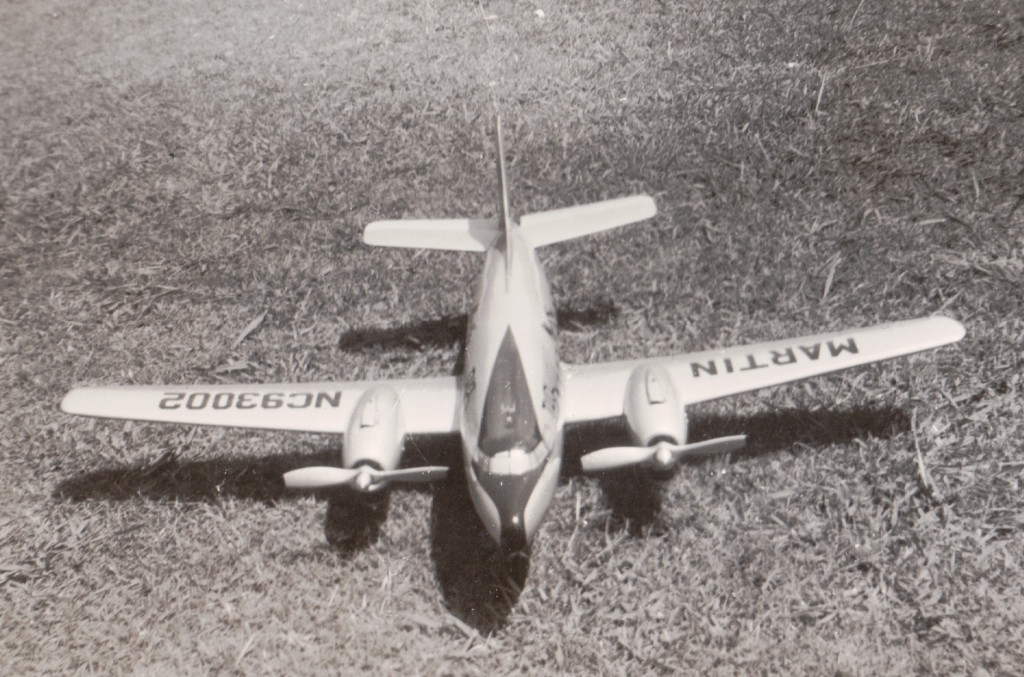
The mister tells me that he remembers his father and grandfather talking about the Martin.
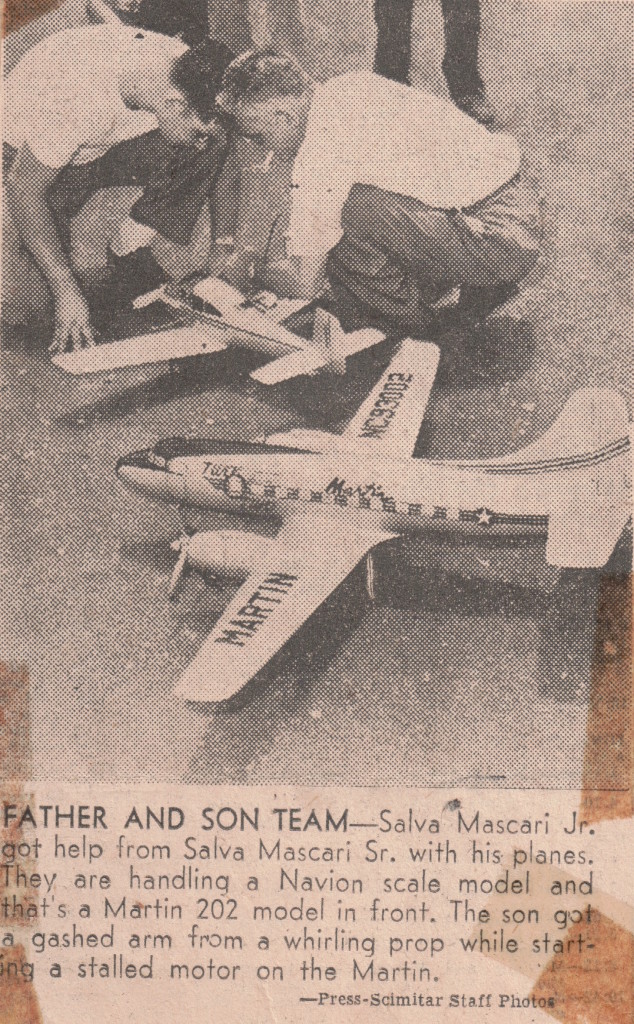
This clipping makes me laugh….nearly 60 years later the mister would also sustain just such a “prop bite” to his arm! The Navion scale model is in the family collection.
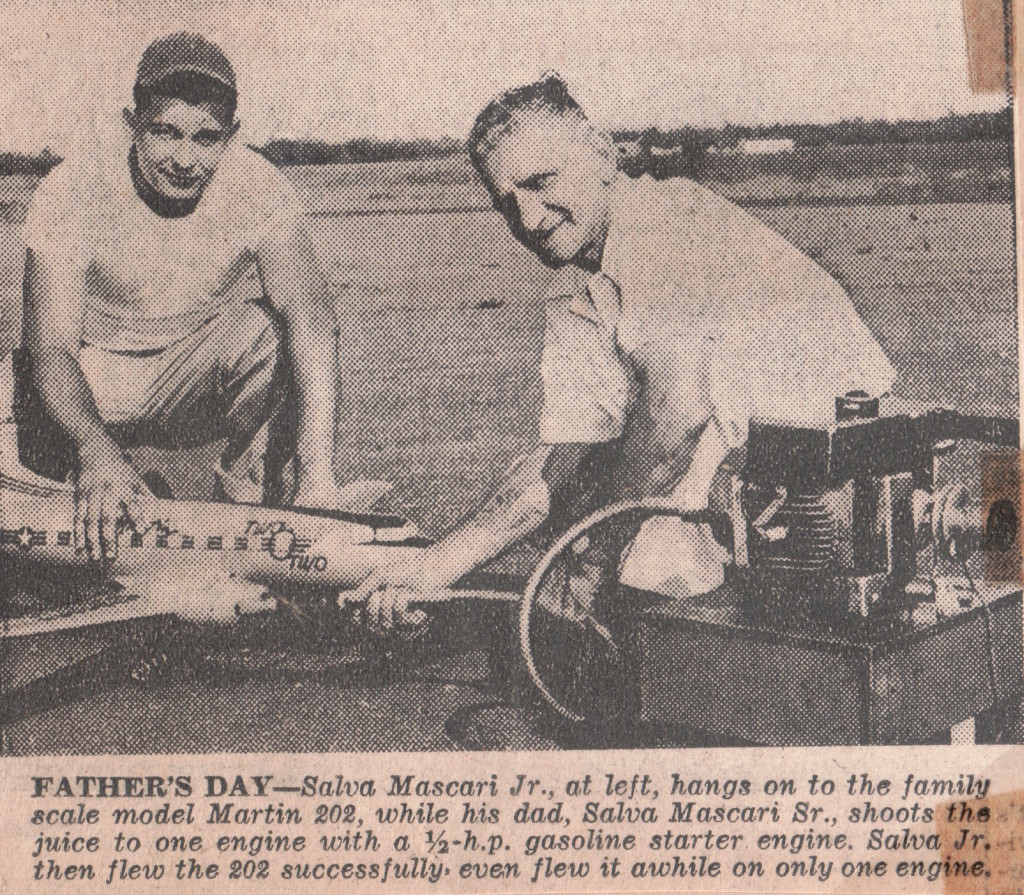
Sadly, the mister never got to see the Martin 2-0-2, but its beauty lives on through these newspaper clippings.
During an airshow, a hovering helicopter with its rotor downdraft smashed it to the ground. Shortly afterwards, Salvatore decided that he wanted the challenge of building a bigger plane than the Martin 2-0-2, so he wrote to Lockheed and requested a schematic of a Constellation. Not the kind that you see in the night sky but the one that was originally instigated by Howard Hughes and brought to fruition during WWII.
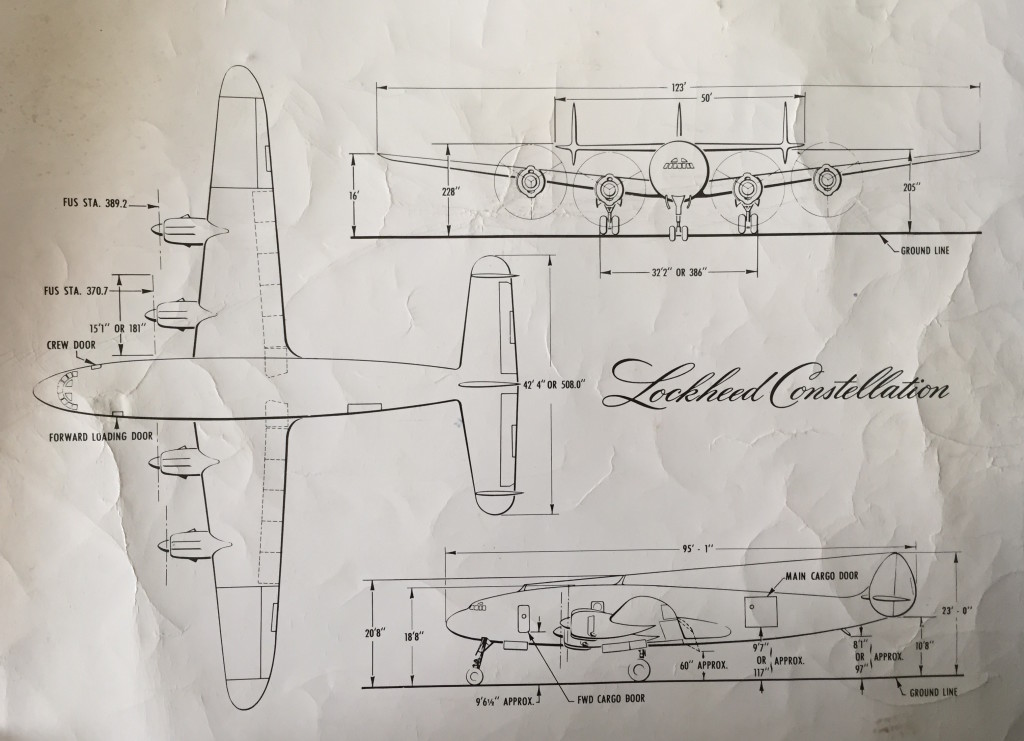
This is the 8.5 x 11″ schematic that Lockheed provided the elder Salvatore. From this drawing, he set about making a scale model. His notes on the back of the photo state that 1/2″=1ft thereby the scale Constellation model would have a 63 1/2″ wing span, 47 1/2″ fuselage and 16 9/16″ high landing gear. Just to be clear—he had NO plans from which to build this plane, only the photo above. He constructed the Connie in his basement using balsa wood for the body, hardwood for the braces and then sheathed the skeleton with more balsa wood. He then used airplane glue and talcum powder to create the exterior shell of the plane. He sanded this down smooth and to his desired thickness. Finally, he painted the plane with automobile enamel and sealed everything with carnauba wax.
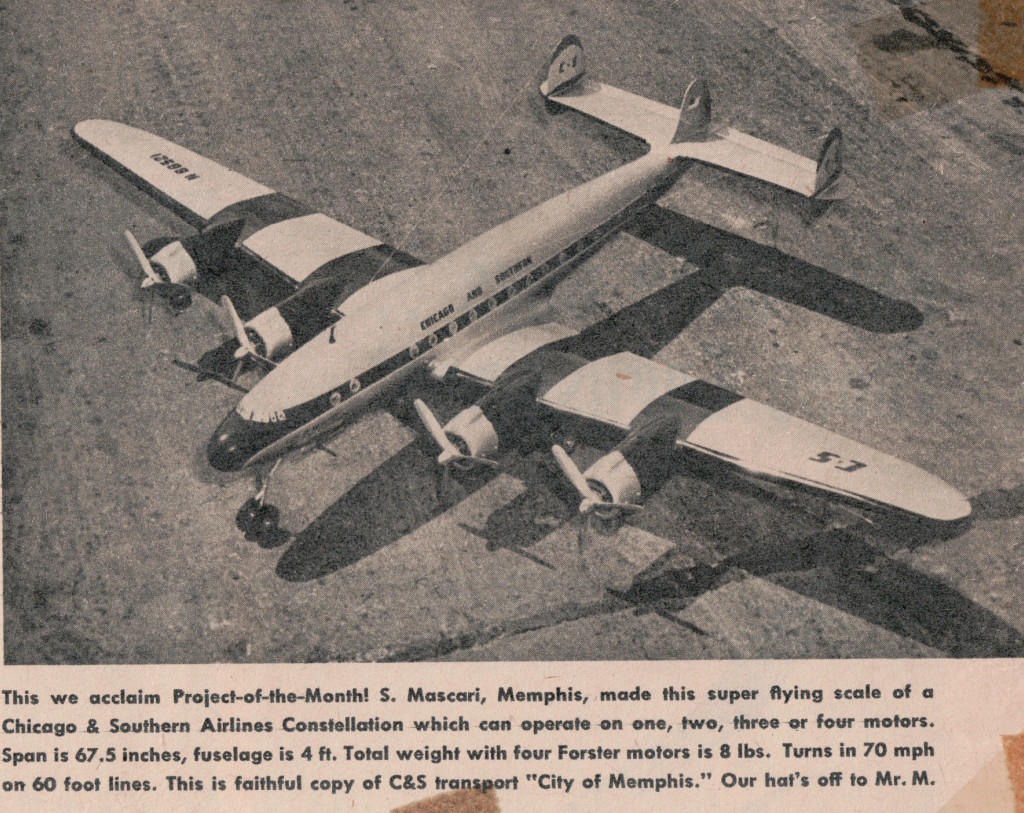
The plane utilized four Forster 29 engines that could fly 70 mph on 70 foot lines! (The above article is correct as to when it appeared in print, but they later used 70ft lines) Can you imagine the torque of this plane and the strength it took to keep from letting it fly away? Remember, this was line controlled—you held on to long lines and pivoted yourself in a circle. Oh! I think I am dizzy!
Salvatore used snuff boxes welded together to make the gas tanks for the Connie and it used a combination of alcohol and castor oil for fuel. All of that was cranked by a 2 cycle motor and fully fueled it weighed a grand total of 9 1/2 lbs. The nacelles and landing gear were all custom-made (no running down to the hobby store for parts) and it took him less than a year to build.
The Constellation was initially put forth as an airplane design in July of 1937 and its first flight, as model 049/C-69 took place on January 9, 1943. After WWII, commercial use of the Constellation began with TWA in February 1946. She became the “gold standard” of safety, comfort and style in the airline industry. In 1958 the production of Constellations ended and on May 11, 1967 the last scheduled Constellation flight took place. One of the most famous Connie’s would be the Columbine II, the original Air Force One and the plane of then-president Dwight D. Eisenhower. She is still around, though not in great shape. However, in this recent article, it sounds like she may be getting a second wind.
When Salvatore first built his Connie, circa 1951, it was a scale model of the “City of Memphis” from the Memphis, TN based Chicago and Southern line. You can see her original paint job above. Like the Martin 2-0-2 before her, she and her “pilot”, Salva, won many contests.
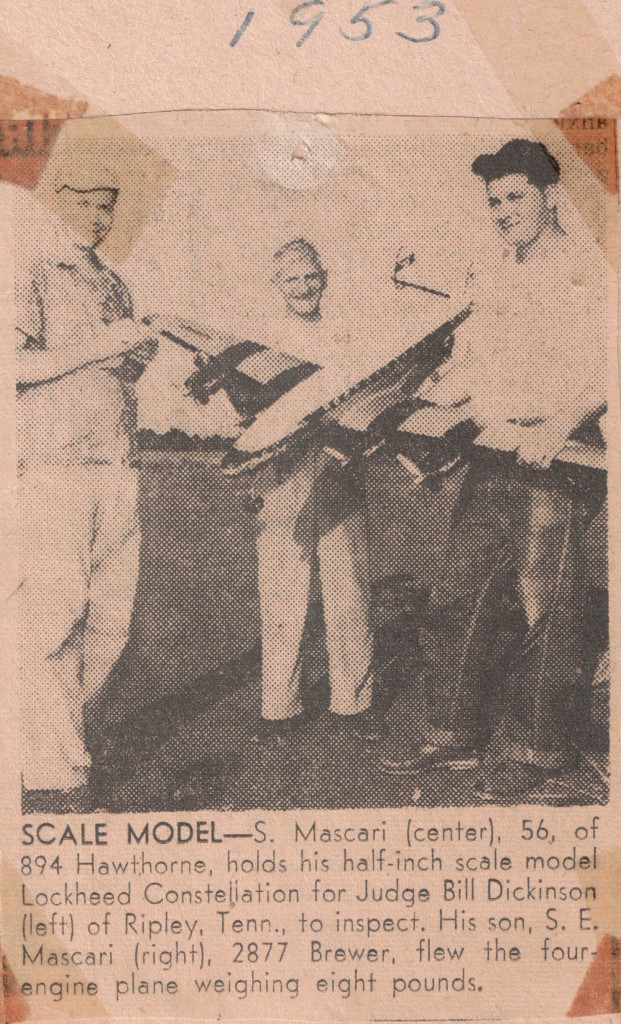
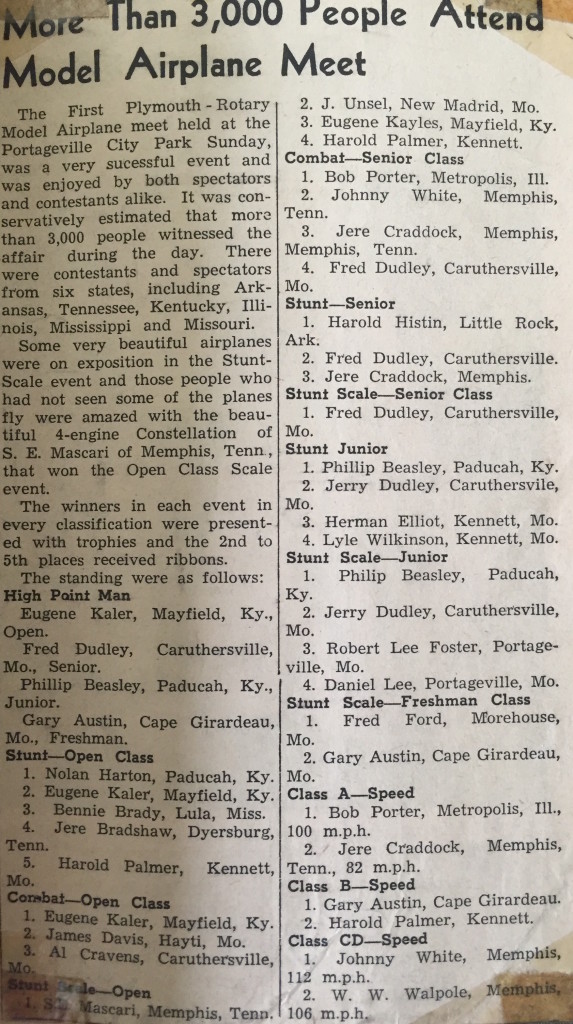
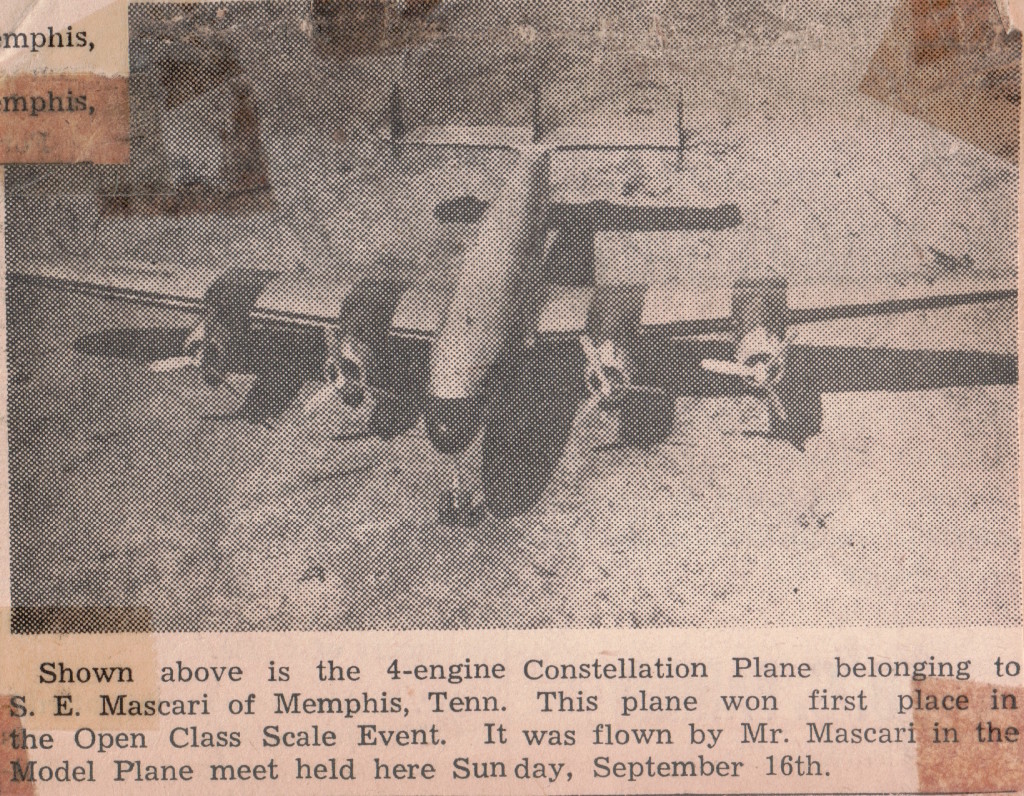
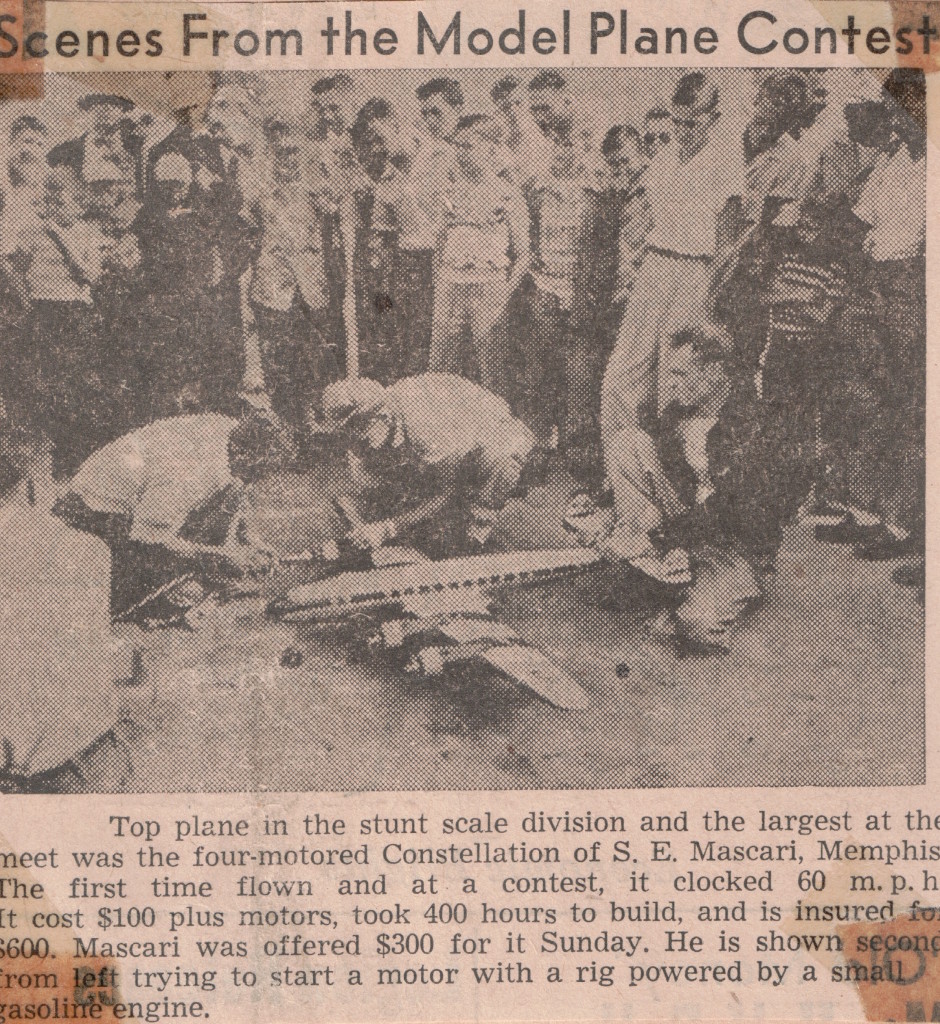
Here you can see the elder Salvatore demonstrating how the individual engines were cranked.
Sometime between 1951 and 1953 this plane was flown at nearly every Mid-South airplane enthusiast meet, winning many times over. On May 1, 1953 Delta airlines merged with Chicago and Southern and became Delta C&S. Salvatore would repaint his plane to match the new paint logos of the company. In the summer of 1955 the airline would be then known as just Delta and yet our Connie still flies proudly for the now defunct line. Due to the merger and name change dates, I can surmise that these following professional shots were most likely taken during the summer of 1952.
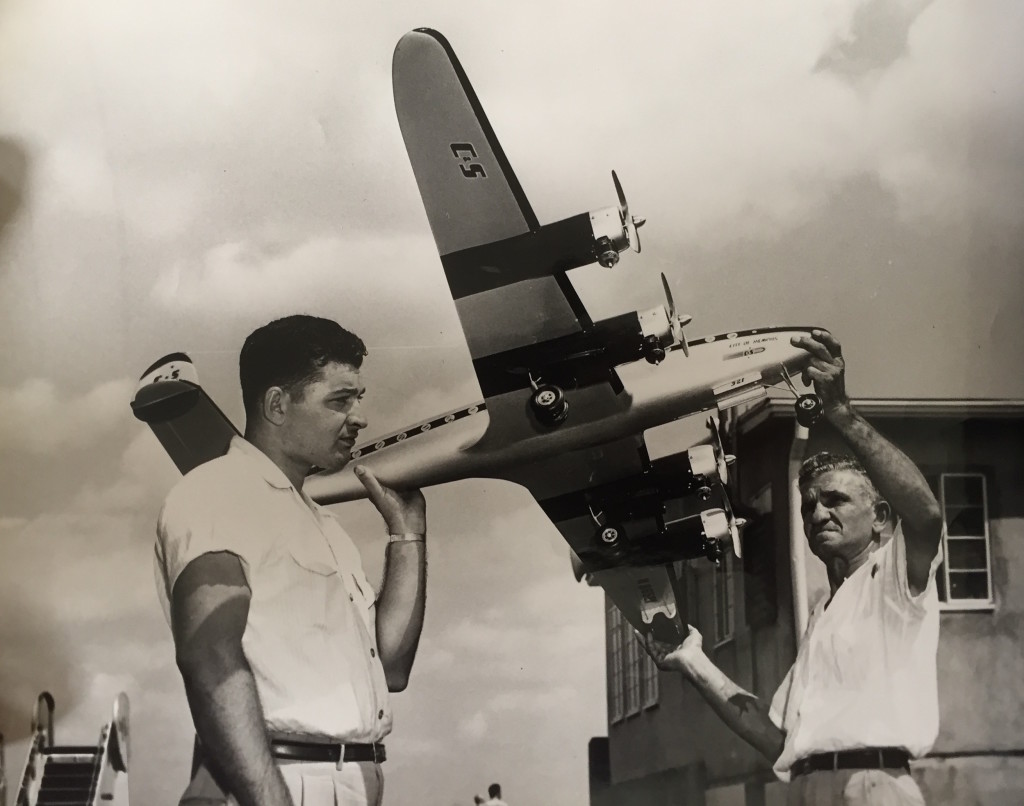
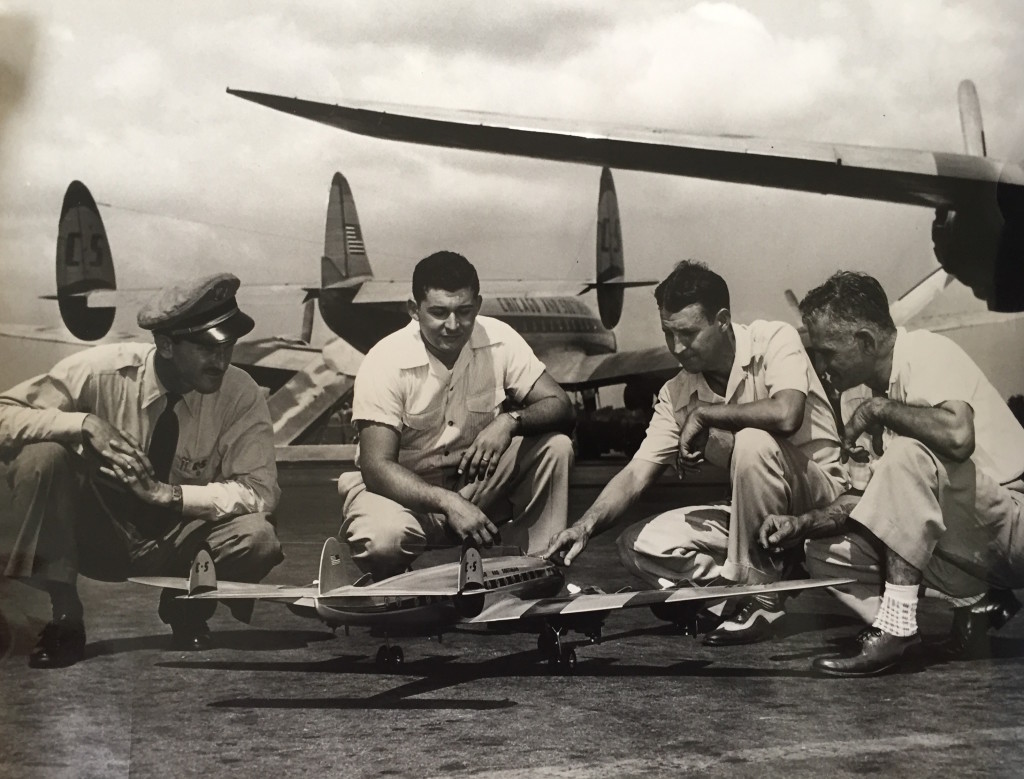
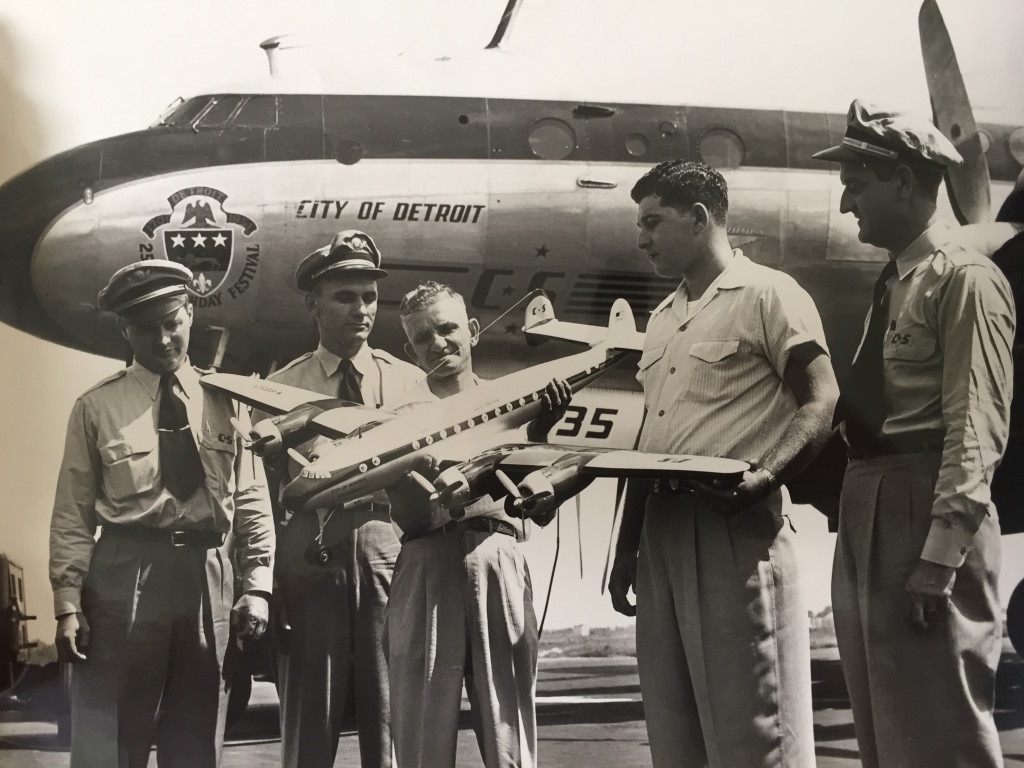
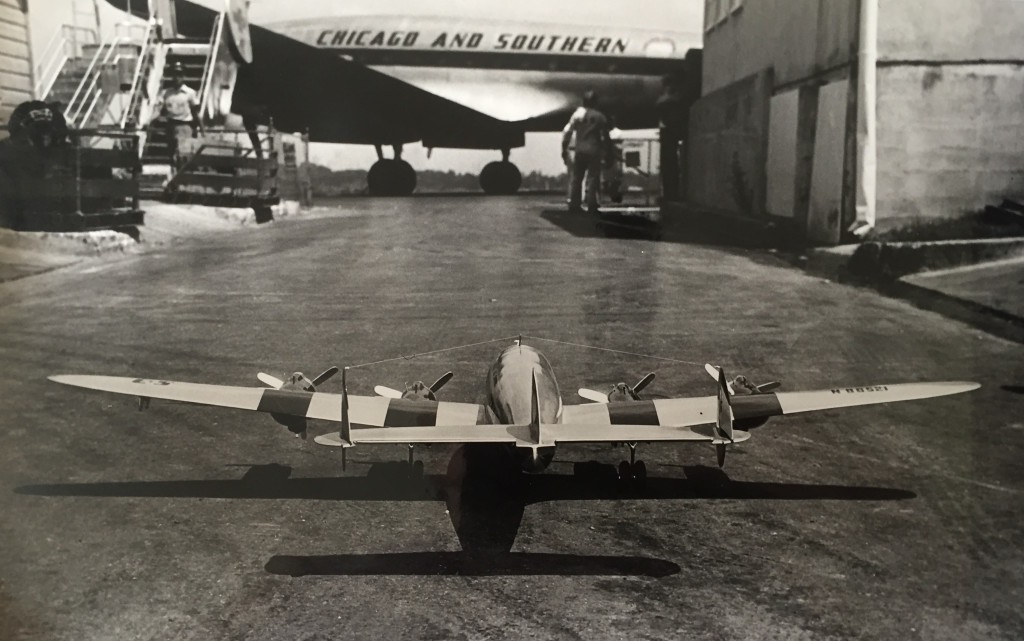
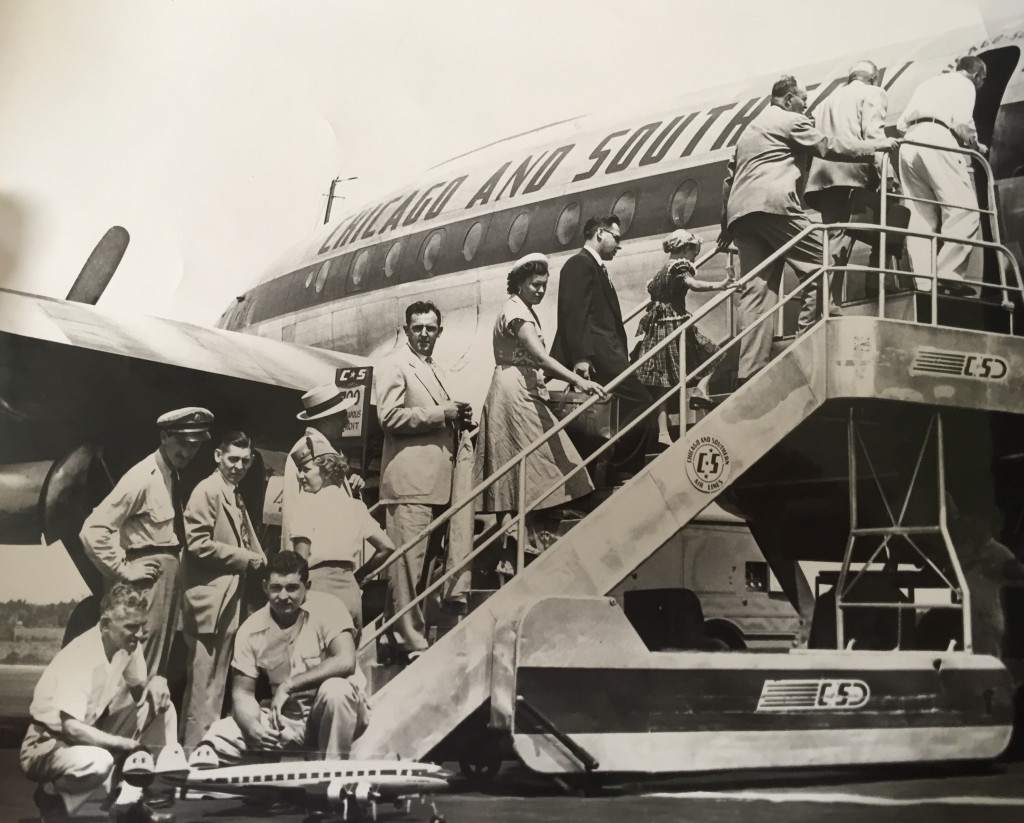
Top photo of is of Salvatore Sr. and Salvatore Jr. holding their prize-winning scale model Lockheed Constellation.
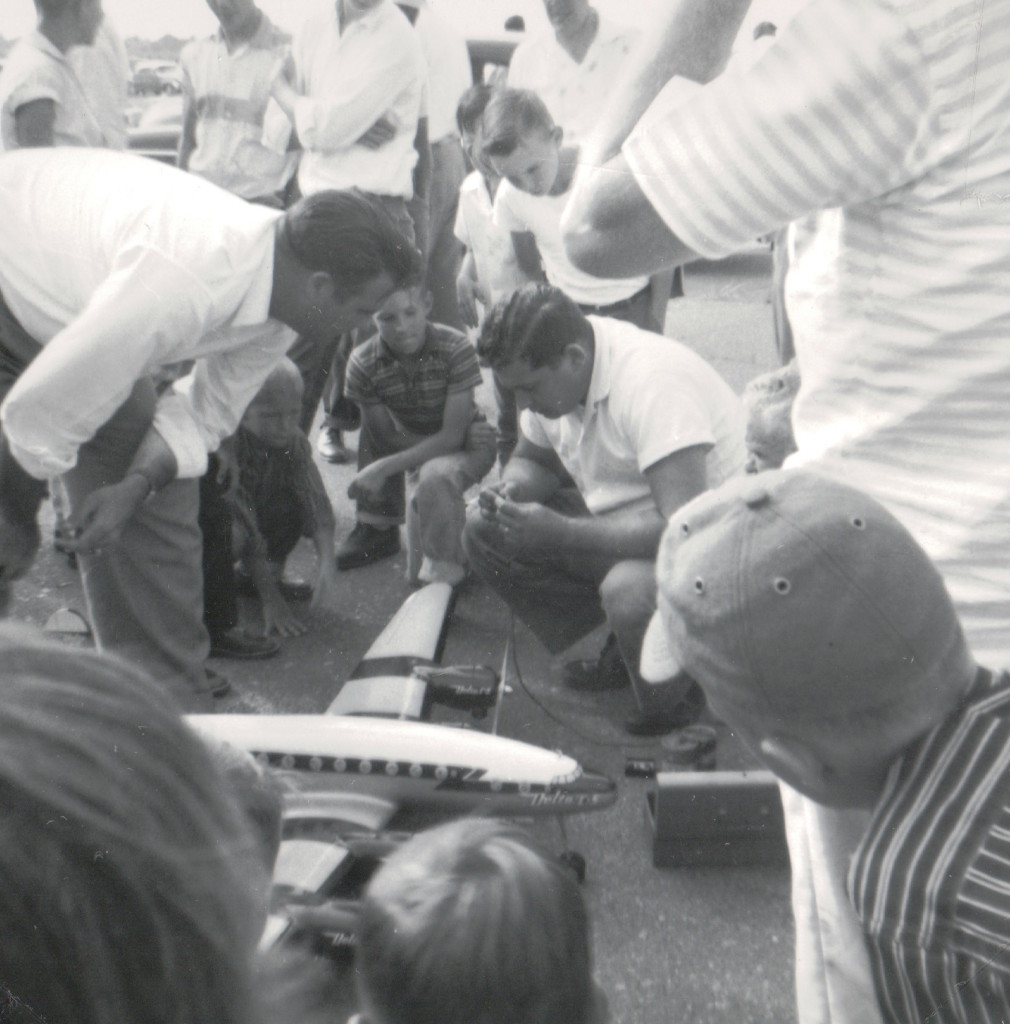
Even the mister remembers getting to fly this plane for a few minutes (he is the tow-headed barely visible kid behind the boy with the baseball cap). Also note that the plane is sporting its new paint scheme with the Delta C&S logo.
Constellations are now quite an endangered species. Circa 1998 there were only 80 surviving planes and of those, only 5 were airworthy. While ours is no longer airworthy, she hung in our living room for many years. She is now in the hands of the family’s younger generation, hopefully to be admired and cared for many more years.
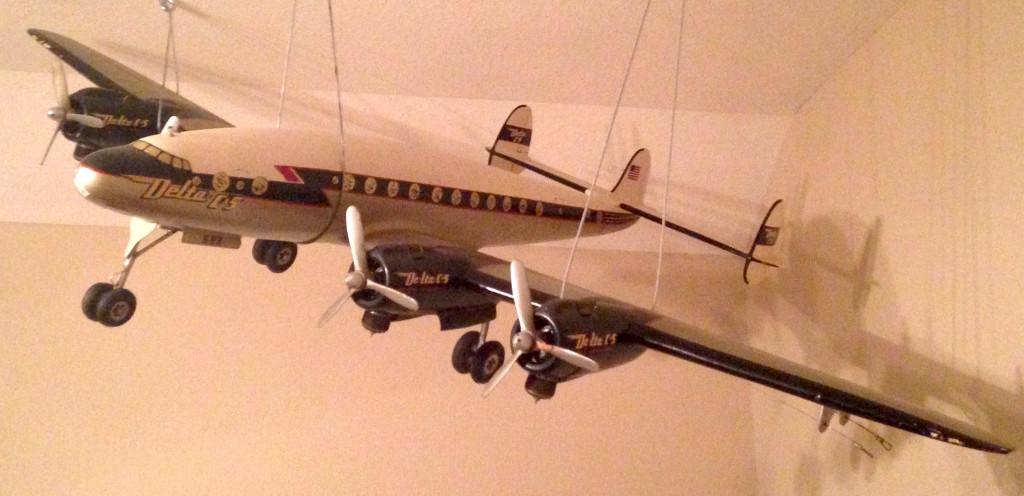
Postscript: While I do know “most” of these stories inside and out, I often don’t know some of the peripheral but equally important information. Writing a blog like this forces me to verify sources and do historical research. To that end, I learn many things that I attempt to pass on to you. I had no idea that the original Air Force One was a Constellation or that she was in the process (hopefully) of being restored. It was fun interviewing the mister about an item which he had so much personal knowledge, but yet that information isn’t properly recorded anywhere. I appreciate being challenged by a family member to write this post but not just because he will learn some family history (and I get to share), but because I get to share the learning process with him and you.
